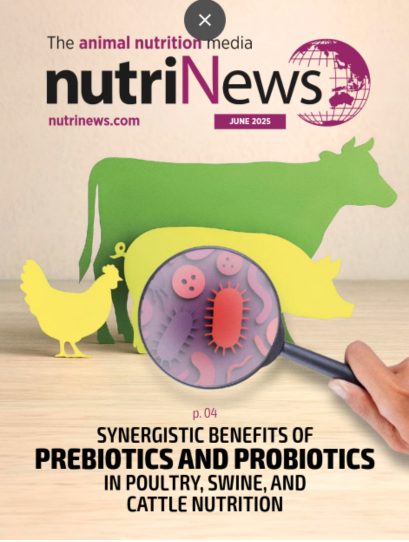Definition and classification
Citrus pulp is a by-product of the industrial extraction of juice.
The term “citrus” comprises different fruits from the genus Citrus, maily orange, tangerine, lemon, and lime.

The residues of the industrial production of citrus juices represent 30-50% of the weight of the processed fruit. They comprise:
 Pulp distribution as a fresh product (moisture content >78%) is limited to areas close to the extractive industries. For this reason. dried citrus pulp is the one commercialised internationally.
Pulp distribution as a fresh product (moisture content >78%) is limited to areas close to the extractive industries. For this reason. dried citrus pulp is the one commercialised internationally.
Citrus pulp is listed in the category “Other seeds and fruits, and fruit by-products” of the Catalogue of Feed Materials of EU Regulation
2017/1017, with the numbers 5.1.3.1 (fresh) and 5.1.3.2 (dried). It is also listed in the Crude Fiber Obligatory Declaration (without maximum level). It is defined as “a product obtained by means of pressing citrus fruits during the elaboration of juices (5.1.3.1) and subsequent drying (5.1.3.2)”.
If pectin is removed. this is also indicated in the designation. It can also contain up to 1% of anhydrous methanol, ethanol and propane-2-ol.
Pulp-making process
Washing
The juice extraction process starts by washing the fruit to eliminate leaves, dirt, and peel oils that can contain pesticide residues.
Separation of oils from peels
The peel’s essential oils (mainly d-limonene, of pronounced bitterness) are separated by pressing the whole fruit.
Juice extraction
Then, cuts are made Through the fruit’s peel to allow juice extraction.
Pulp separation
Citrus pulp consists of skins, membranes, pulp and seeds.
The juice is filtered to separate the floating pulp, and the residue is added to the pulp.
The pulp is taken to storage silos for transportation to farms, where ruminants consume it directly. Alternatively, it is dried and, after removing pectins, it is used to produce pellets for animal feeding.
During drying, calcium hydroxide or carbonate is included to facilitate the release of bound water. Then, the material is pressed to separate the molasses.The residue is dried in rotating drums and 20-50% of the molasses are incorporated into the pulp. This makes it darker, increases sugar content, and proportionally reduces the content of insoluble fiber.
The fresh pulp can be easily ensiled, and no treatment is needed since it is ground. However, it is recommended to ensile it with cereal straw to reduce effluents and sugar losses, as well as to increase silage effective fiber.

Chemical composition

The composition is very variable according to:
- Type of fruit
- Degree of maturity
- Growing conditions
- Juice extraction process
Dry matter is characterized by:
- Sugars (18 to 65%).
- Soluble fiber (7-42%. mainly pectins).
- Insoluble fiber (12-43% NDF).
- Ash (3-20%), according to the amount of calcium carbonate added for drying. Lower in the fresh product.
- Proteín (5-11%), low level.
- Fat (1-8%)%), it varies depending on the presence of seeds (0-15%) in fruits.
The lemon pulp has a lower content of sugars (28% vs 45% DM), but a higher content of soluble (26 vs 20% DM) and insoluble (31 vs 21% DM) fiber, when compared with orange or tangerine. The latter two do not differ in their chemical composition.
Sugar levels in the national pulp are higher than the referenced in tables from other countries, probably due to the systematic addition of molasses in our plants (De Blas et al.. 2018). Also, there are no differences in pulp composition caused by the drying process.
Nutritional value
Citrus pulp has a high potential for degradation in the rumen (>90%) and for apparent digestibility in swine (>78%). Due to this, it is often used to replace cereals (barley) in animal diets.
In the rumen, this replacement leads to lower levels of propionic and lactic acids, which help prevent acidosis. However, it does not provide an input of effective fiber in the diet.
In monogastric diets, it can increase digesta viscosity and slows down the passage through the digestive tract. This creates a feeling of satiety and better intestinal health in pregnant sows, as well as in pigs at the end of the fattening period as well.
Use in animal feeding
It is a product with high energy value for ruminants and swine, similar to barley grains in terms of metabolizable energy.
Rumiants
It can be added to the diet at high levels (>20% DM), particularly in lactating diets for highly productive animals.
Swine
The inclusion levels of dried pulp are between 10 and 15%, up to a maximum of 20% in sows, without affecting the productivity. It is a very palatable product due to its pleasant aroma and high sugar content, although its incorporation into the diet should be gradual to facilitate the digestive adaptation to increased levels of soluble fiber.
Conclusions
Citrus pulp can be used as a source of dietary energy, replacing cereals in the diet.
Rumiants
Its fast degradation in the rumen should be considered to avoid reducing milk fat and protein production.
Swine
In swine, it is recommended to add citrus pulp to the diet mainly in the final growth phase (80 to 120 kg), to acidify the intestinal digesta and reduce the counts of pathogenic bacteria (Cerisuelo et al., 2010). Also, it can be used in the pregnancy phase to decrease abnormal behavior (stereotypies).












